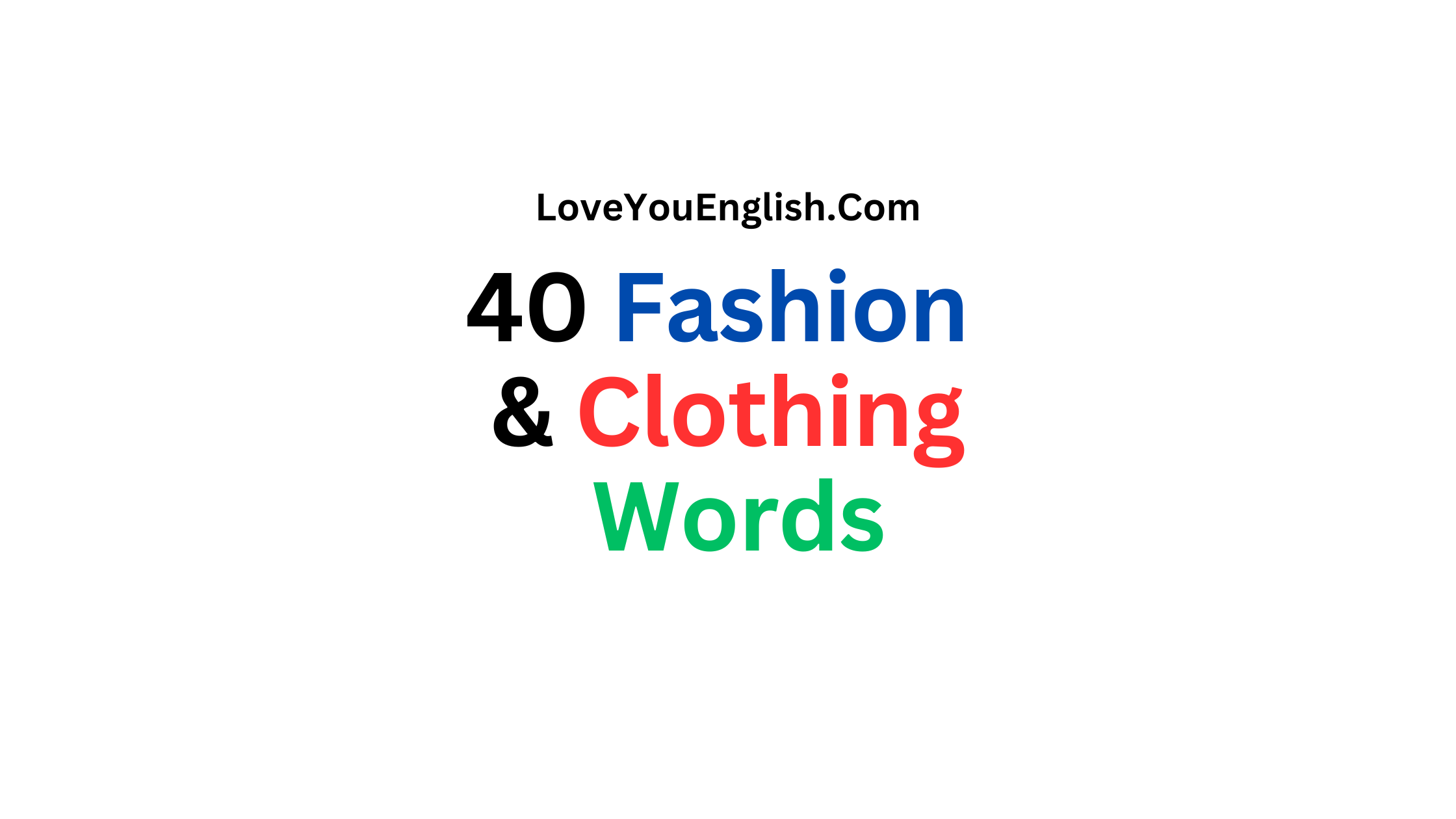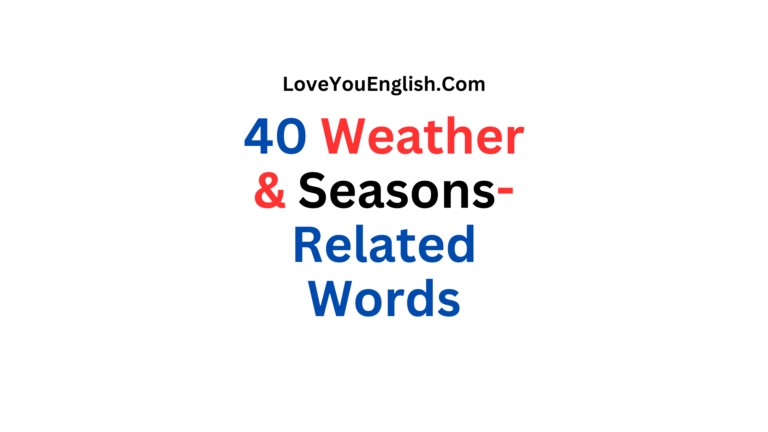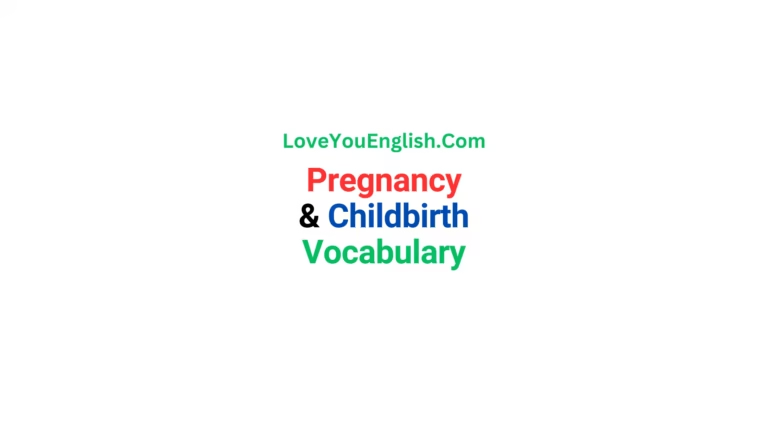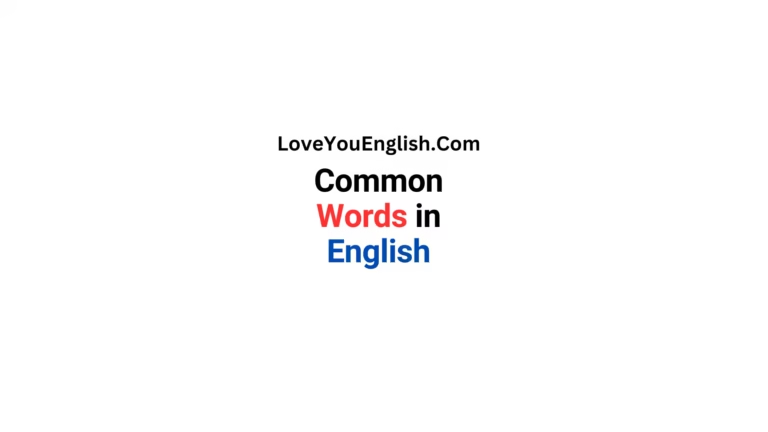English Vocabulary: 50 Fashion and Clothing-Related Words
Accessory: Something extra you wear to complete an outfit, like a scarf, hat, or jewelry.
Ankle boots: Short boots that end just above the ankle.
Appliqué: A decorative design sewn on top of fabric to add texture or pattern.
Argyle: A pattern of diamond-shaped lines often seen on socks and sweaters.
Asymmetrical: When clothing has an uneven or unbalanced design, like a top with one shoulder shorter than the other.
Blazer: A smart, structured jacket worn for formal or business occasions.
Bohemian: A free-spirited style with loose, colorful, and artistic clothing.
Bodycon: A tight-fitting dress or top that shows the shape of the body.
Boyfriend jeans: Loose-fitting jeans that look like they’re borrowed from a boyfriend.
Brocade: A fancy fabric with raised, decorative patterns woven into it.
Cardigan: A knitted sweater that opens in the front, like a jacket.
Chiffon: A light, see-through fabric that’s soft and flowing.
Clutch: A small handbag without handles, usually carried under the arm.
Corset: A tight-fitting undergarment worn to shape the body.
Couture: High-end, custom-made fashion designed by top designers.
Denim: A strong cotton fabric used to make jeans and jackets.
Distressed: Clothing that looks deliberately worn or torn, like ripped jeans.
Espadrilles: Casual shoes with a soft fabric top and a rope-like sole.
Fascinator: A small, decorative headpiece often worn at fancy events.
Fedora: A soft hat with a wide brim and a creased crown.
Flare: When pants or skirts widen from the knee downward.
Halter: A top that ties around the neck, leaving the shoulders and back exposed.
High-waisted: Clothing that sits at or above the natural waistline.
Kitten heels: Short, low-height heels usually less than 2 inches tall.
Lapel: The folded flap on the front of a jacket or coat.
Layering: Wearing multiple pieces of clothing on top of each other.
Maxi: A long dress or skirt that reaches the ankles.
Mini: A very short skirt or dress that ends high on the thigh.
Monochrome: An outfit using only one color or different shades of the same color.
Neckline: The shape and design of the top edge of a garment around the neck.
Ombré: A color effect where one color gradually fades into another.
Paisley: A teardrop-shaped pattern with intricate designs.
Palazzo: Wide-leg, loose-fitting pants that are very comfortable.
Pinstripe: A pattern of very thin, vertical lines on fabric.
Pleats: Folds in fabric that add volume or decoration to clothing.
Peplum: A short, flared ruffle attached to the waist of a top or jacket.
Raglan: A type of sleeve that extends in one piece to the collar.
Resort wear: Casual, comfortable clothing designed for vacation settings.
Ruching: Gathered or pleated fabric that creates a gathered, textured look.
Safari: Clothing inspired by outdoor, explorer-style clothing with lots of pockets.
Seersucker: A lightweight fabric with a crinkled texture, often used in summer clothing.
Silhouette: The overall shape or outline of a piece of clothing.
Skort: A pair of shorts with a flap of fabric in front that makes it look like a skirt.
Tartan: A pattern of crossed horizontal and vertical bands in different colors.
Tulle: A very light, see-through, net-like fabric often used in ballet costumes and wedding dresses.
Tweed: A rough, woolen fabric with a textured surface.
Vegan leather: Artificial leather made without using any animal products.
Vintage: Clothing from a previous era, typically at least 20 years old.
Wedge: A type of shoe where the heel is a solid piece extending from the back to the middle of the shoe.
Wrap dress: A dress that closes by wrapping around the body and tying at the waist.
Here are some effective ways to remember new words:
Use the word in context: Write sentences using the new word.
Visualize: Create a mental image associated with the word.
Mnemonics: Use memory tricks like acronyms or rhymes.
Repetition: Review the word regularly over time.
Group words: Organize related words together.
Word association: Link the new word to one you already know.
Write it down: The act of writing helps reinforce memory.
Teach others: Explaining the word to someone else solidifies your understanding.
Use flashcards: Test yourself regularly.
Learn word roots, prefixes, and suffixes: Understanding word parts can help you guess meanings.
Use the word in conversation: Practical application aids retention.
Create a story: Weave new words into a memorable narrative.



 Ready to grow your English vocabulary? Today, we’re exploring the interesting world of weather and seasons. Whether you’re into studying weather, love nature, or just enjoy learning new words, this list is…
Ready to grow your English vocabulary? Today, we’re exploring the interesting world of weather and seasons. Whether you’re into studying weather, love nature, or just enjoy learning new words, this list is…



